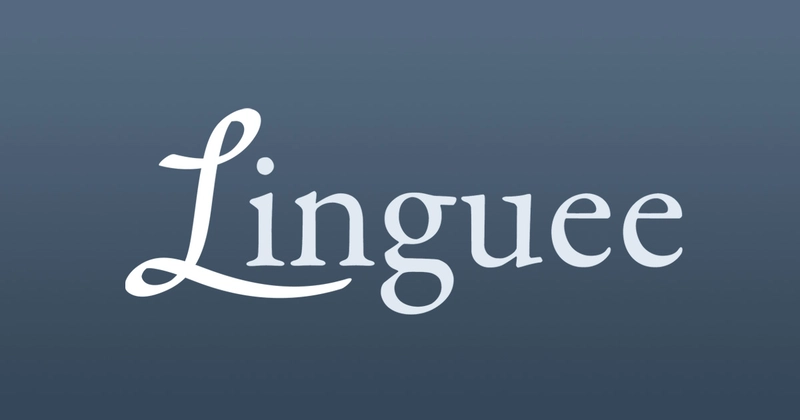Google Translate Alternatives: Exploring the Best Translation Tools for Every Need in 2025
When it comes to breaking language barriers, Google Translate has long been the go-to choice for casual users and professionals alike. However, as language translation needs have grown more nuanced and specialized, so has the demand for tools that offer greater accuracy, context awareness, privacy, and collaborative capabilities. Whether you're part of a global enterprise, a localization specialist, or just someone who needs more than basic translations, exploring the best Google Translate alternatives can open new doors. In this article, we explore the top contenders in the translation software space, examining how they compare and what sets them apart. From real-time collaboration to AI-powered enhancements, these Google Translate alternatives are equipped to meet a wide range of requirements. 1. Pairaphrase Leading the pack among Google Translate alternatives is Pairaphrase, a web-based Translation Management System (TMS) designed for teams that value faster, smarter, and safer translation. Unlike traditional translation tools, Pairaphrase combines AI-powered machine translation with robust team-based features. It supports over 140 languages, 20,000+ language pairs, and 24 different file types while preserving document formatting. Features like Translation Memory, Terminology Management, and real-time collaboration make it a smart solution for enterprises looking to streamline multilingual communication. What sets Pairaphrase apart is its flexibility. Users can integrate with platforms like Google Drive and even connect with ChatGPT for contextually rich outputs. Built with enterprise-grade security compliance, Pairaphrase ensures that sensitive data stays protected. It’s not just about translating text but managing the entire translation lifecycle effectively. If you're searching for a Google Translate alternative with depth and enterprise focus, Pairaphrase deserves serious consideration. 2. Microsoft Translator The ongoing debate of Microsoft Translate vs Google Translate often centers around integration and usage context. Microsoft Translator is part of the Microsoft ecosystem, making it an ideal fit for businesses that rely on Microsoft Office and Teams. It supports text, speech, and image translations in real-time and works seamlessly across devices. The translator's integration into Microsoft products enables instant in-document translation for Word or live subtitles in Teams meetings. When evaluating Google Translate vs Microsoft Translate for business, the latter often wins in enterprise settings due to its integration capabilities and security features. While Google Translate is more ubiquitous, Microsoft Translator excels in team collaboration scenarios. 3. Amazon Translate Another strong player in the machine translation space is Amazon Translate. Often used in cloud-based applications, Amazon Translate leverages deep learning models to deliver high-quality translations tailored for developers and enterprises. In the comparison of Amazon Translate vs Google Translate, Amazon offers greater customization via its AWS environment. Developers can fine-tune translation models for specific use cases, such as translating user reviews or real-time chat. However, Amazon Translate is more geared toward API-based integration rather than standalone use. For users who prefer plug-and-play functionality, it may not be as intuitive. Still, it's a powerful Google Translate alternative for businesses seeking scalability and integration. 4. DeepL Translator If your priority is linguistic precision, DeepL stands out among Google Translate alternatives. Known for its near-human translation quality, DeepL uses neural network models that capture the nuances of language better than most competitors. The tool supports fewer languages than Google Translate, but it often outperforms in terms of contextual accuracy. DeepL Pro, the paid version, also offers enhanced privacy settings, making it suitable for translating confidential documents. DeepL is widely used by professional translators and businesses that need high-quality output, even if it means trading off the number of supported languages. 5. SYSTRAN SYSTRAN is one of the oldest names in the translation technology sector, offering solutions tailored for industries such as legal, finance, and healthcare. What distinguishes SYSTRAN from other Google Translate alternatives is its domain-specific translation capabilities. It provides pre-trained engines that understand industry jargon, making it ideal for professional and technical content. SYSTRAN also supports on-premise deployment, offering more control over data privacy. It’s a strong candidate for businesses looking for specialized translation support. 6. iTranslate For mobile users and travelers, iTranslate offers a user-friendly interface and voice-to-voice translation in over 100 languages. It's ideal for casual, on-the-go

When it comes to breaking language barriers, Google Translate has long been the go-to choice for casual users and professionals alike. However, as language translation needs have grown more nuanced and specialized, so has the demand for tools that offer greater accuracy, context awareness, privacy, and collaborative capabilities. Whether you're part of a global enterprise, a localization specialist, or just someone who needs more than basic translations, exploring the best Google Translate alternatives can open new doors.
In this article, we explore the top contenders in the translation software space, examining how they compare and what sets them apart. From real-time collaboration to AI-powered enhancements, these Google Translate alternatives are equipped to meet a wide range of requirements.
1. Pairaphrase
Leading the pack among Google Translate alternatives is Pairaphrase, a web-based Translation Management System (TMS) designed for teams that value faster, smarter, and safer translation.
Unlike traditional translation tools, Pairaphrase combines AI-powered machine translation with robust team-based features. It supports over 140 languages, 20,000+ language pairs, and 24 different file types while preserving document formatting. Features like Translation Memory, Terminology Management, and real-time collaboration make it a smart solution for enterprises looking to streamline multilingual communication.
What sets Pairaphrase apart is its flexibility. Users can integrate with platforms like Google Drive and even connect with ChatGPT for contextually rich outputs. Built with enterprise-grade security compliance, Pairaphrase ensures that sensitive data stays protected. It’s not just about translating text but managing the entire translation lifecycle effectively.
If you're searching for a Google Translate alternative with depth and enterprise focus, Pairaphrase deserves serious consideration.
2. Microsoft Translator
The ongoing debate of Microsoft Translate vs Google Translate often centers around integration and usage context. Microsoft Translator is part of the Microsoft ecosystem, making it an ideal fit for businesses that rely on Microsoft Office and Teams.
It supports text, speech, and image translations in real-time and works seamlessly across devices. The translator's integration into Microsoft products enables instant in-document translation for Word or live subtitles in Teams meetings.
When evaluating Google Translate vs Microsoft Translate for business, the latter often wins in enterprise settings due to its integration capabilities and security features. While Google Translate is more ubiquitous, Microsoft Translator excels in team collaboration scenarios.
3. Amazon Translate
Another strong player in the machine translation space is Amazon Translate. Often used in cloud-based applications, Amazon Translate leverages deep learning models to deliver high-quality translations tailored for developers and enterprises.
In the comparison of Amazon Translate vs Google Translate, Amazon offers greater customization via its AWS environment. Developers can fine-tune translation models for specific use cases, such as translating user reviews or real-time chat.
However, Amazon Translate is more geared toward API-based integration rather than standalone use. For users who prefer plug-and-play functionality, it may not be as intuitive. Still, it's a powerful Google Translate alternative for businesses seeking scalability and integration.
4. DeepL Translator
If your priority is linguistic precision, DeepL stands out among Google Translate alternatives. Known for its near-human translation quality, DeepL uses neural network models that capture the nuances of language better than most competitors.
The tool supports fewer languages than Google Translate, but it often outperforms in terms of contextual accuracy. DeepL Pro, the paid version, also offers enhanced privacy settings, making it suitable for translating confidential documents.
DeepL is widely used by professional translators and businesses that need high-quality output, even if it means trading off the number of supported languages.
5. SYSTRAN
SYSTRAN is one of the oldest names in the translation technology sector, offering solutions tailored for industries such as legal, finance, and healthcare.
What distinguishes SYSTRAN from other Google Translate alternatives is its domain-specific translation capabilities. It provides pre-trained engines that understand industry jargon, making it ideal for professional and technical content.
SYSTRAN also supports on-premise deployment, offering more control over data privacy. It’s a strong candidate for businesses looking for specialized translation support.
6. iTranslate
For mobile users and travelers, iTranslate offers a user-friendly interface and voice-to-voice translation in over 100 languages. It's ideal for casual, on-the-go translation needs and features offline functionality, a critical asset for areas with limited connectivity.
While not as feature-rich as enterprise solutions, iTranslate earns its place among Google Translate alternatives for its ease of use and accessibility.
7. Linguee
Linguee is a hybrid between a dictionary and a translation search engine. It doesn’t offer real-time translation like Google Translate, but provides a wealth of contextual examples by pulling from bilingual web content.
This makes Linguee an excellent tool for translators who want to understand word usage in real-world contexts. It’s especially valuable for translating idioms, legal terminology, or regional dialects.
Final Thoughts
Choosing the right translation tool depends largely on your goals. Are you translating simple phrases, localizing software, or managing a multilingual team?
- For professional teams needing secure, accurate, and collaborative tools, Pairaphrase delivers a compelling mix of features.
- If you're deciding between Microsoft Translate vs Google Translate, Microsoft wins on business integration.
- For developers, Amazon Translate vs Google Translate comes down to flexibility and API depth.
And for those prioritizing translation quality, DeepL is a go-to option.
In conclusion, while Google Translate remains a solid baseline tool, many Google Translate alternatives offer enhanced capabilities tailored to specific needs. Whether it’s preserving document formatting, managing team workflows, or ensuring data privacy, the landscape of Google Translate alternatives is rich with innovation.
As organizations grow more global, the ability to communicate across languages effectively becomes not just a convenience but a strategic asset. Investing in the best translation programs that align with your goals can drastically improve both efficiency and quality in multilingual communication.














































































































































































![[The AI Show Episode 156]: AI Answers - Data Privacy, AI Roadmaps, Regulated Industries, Selling AI to the C-Suite & Change Management](https://www.marketingaiinstitute.com/hubfs/ep%20156%20cover.png)
![[The AI Show Episode 155]: The New Jobs AI Will Create, Amazon CEO: AI Will Cut Jobs, Your Brain on ChatGPT, Possible OpenAI-Microsoft Breakup & Veo 3 IP Issues](https://www.marketingaiinstitute.com/hubfs/ep%20155%20cover.png)





































































































































































































































































_incamerastock_Alamy.jpg?width=1280&auto=webp&quality=80&disable=upscale#)
_Brain_light_Alamy.jpg?width=1280&auto=webp&quality=80&disable=upscale#)






























































































![Senators reintroduce App Store bill to rein in ‘gatekeeper power in the app economy’ [U]](https://i0.wp.com/9to5mac.com/wp-content/uploads/sites/6/2025/06/app-store-senate.jpg?resize=1200%2C628&quality=82&strip=all&ssl=1)






























































































